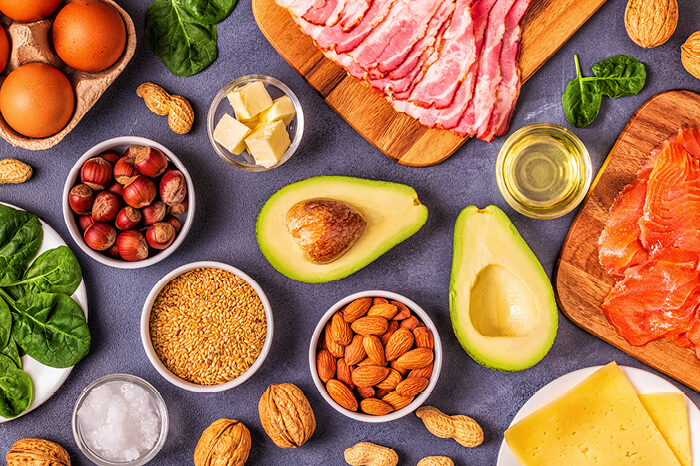The foods we eat consist of several nutritional groups – such as protein, carbohydrates, fat, vitamins, minerals, and water, to name a few. Each of these plays a different role in providing the nutrients the human body can’t make on its own. From these groups, proteins and carbohydrates are generally considered to be more nutritious than fat, but fat is just as important for maintaining a healthy body.
When people think of fat, they typically envision hamburgers, cheese, sour cream, donuts, ice cream, potato chips, salad dressings and other very rich food items.
However, fats come in several different forms, some of which are beneficial to our bodies and others that are detrimental. Eating too much fat or too much of the wrong type of fat can be unhealthy.
Learning about the different types of fat and what they do inside the human body can help you make better decisions regarding the foods you eat.
In this blog, TrueCare’s Registered Dietitian Amy Matthews breaks down the good, the bad, and the ugly facts about fat.
Why Fats Are Important
When eaten in moderation, dietary fats provide many nutritional benefits. They serve as an important source of energy. They help support cell function and absorb essential fat-soluble vitamins such as A, D, E, and K. Fats also help protect our organs, keep our bodies warm, and produce important hormones.
Eating the right kind of fats can contribute to a healthy heart by lowering inflammation, cholesterol, and blood pressure. Perhaps most important, fats provide the omega-3 fatty acids that serve as essential building blocks for the brain and play a vital role in learning and memory.
Not bad for a nutrient that makes a lot of foods taste better!
Why Some Fats Are Bad
Too much fat in your diet can be very harmful to internal systems that keep our body healthy, especially the heart. Heart attacks are the leading cause of death in the U.S., and excessive consumption of fat contributes to many types of heart disease.
See 8 Tips for Better Heart Health
Bad fats can increase cholesterol levels, which contributes to hardening of the arteries by depositing plaque on the walls of arteries. Over time, plaque deposits can narrow or completely block the arteries, causing the heart to work harder to pump blood throughout the body. This, in turn, can lead to an enlarged heart and cause serious heart problems.
Too much fat is also a common cause of weight gain and inflammation in the joints.
Unsaturated Fat: The Good Fat
Good (healthy) fats are unsaturated. Unsaturated fats come in two groups – monounsaturated (plant based) and polyunsaturated (nuts, seeds and marine based). Both groups help to increase good cholesterol levels and lower the risk of heart disease.
Monounsaturated fats are found in plant-based oils such as olive, canola, peanut, corn, safflower, and sesame. Non-liquid sources include peanut butter, avocados, and some nuts and seeds.
Polyunsaturated fats can be found in flax seeds, chia seeds, walnuts, and fatty fish such as salmon, herring, cod, and anchovies. The oils generally remain liquid at room temperature but start to turn solid when chilled. Most polyunsaturated fats contain omega 3, a fatty acid that helps reduce inflammation in the body and brain, and omega 6, which can boost skin and eye health.
Saturated Fats: The Bad Fat
Saturated fats are generally solid or waxy at room temperature and occur naturally in many foods. Most come from animal sources, including meat and dairy products, while some come from tropical plant sources. Examples include beef, lamb, pork, poultry, processed meats, butter, cheese, whole milk, and coconut and palm oils. Baked and fried foods can also contain saturated fat.
Saturated fats are not completely bad for us. However, too much in your diet can have adverse health effects. Dietitians recommend a dietary maximum of 10% for healthy adults and 7% or less for people with elevated levels of bad cholesterol.
Trans Fats: The Ugly Fat
Trans fats are artificially created and have added hydrogen to make them more solid. They were developed by the food industry to increase the shelf life, flavor, and stability of food. These “hydrogenated” oils have been linked to increased risk of heart disease, higher LDL levels, and lower HDL levels, making them unsafe to eat.
Fortunately, these toxic “food products” were banned in the U.S. in 2020, thereby reducing the number of heart attacks in the U.S. and saving millions of lives. However, small quantities of naturally occurring trans fats can be found in the gut of some animals and meat products made from these animals, including milk products. Avoid any meat or dairy product that says “hydrogenated oil” on the label.
Research has also shown that some types of polyunsaturated oils can turn into trans fats when heated to certain temperature. Cooking with monounsaturated fats like olive or avocado oils will avoid unexpected trans fat in your food. When cooking meat that smokes a lot, use avocado oil because it has a higher heat temperature/smoke point.
Cholesterol, Fat and Heart Health Go Hand in Hand
Cholesterol is a waxy substance the body uses to build cells, make vitamins, and produce other hormones. Like fat, it is not inherently bad, but too much of the wrong kind can cause serious health problems.
Cholesterol travels through the bloodstream on two different types of lipoproteins. High-density lipoprotein (HDL) is the “good” cholesterol because it absorbs cholesterol and carries it back to the liver where it gets flushed from the body. High HDL levels can lower the risk for heart disease and stroke.
Low-density lipoprotein (LDL) is considered the “bad” cholesterol because high levels can increase the risk for heart disease, stroke, and peripheral artery disease. Unfortunately, LDL comprises most of the body’s cholesterol. It creates circulatory problems by building up plaque on the walls blood vessels, causing them to narrow over time. This makes the heart work harder by blocking blood flow to and from the heart and other organs.
Ideally, LDL levels should not exceed 100 mg/dl (milligrams per deciliter). People with no health issues can go as high as 129 mg/dl before doctors become concerned. Eating a diet low in saturated fats and moderate amounts of unsaturated fats can help lower LDL levels.
Get an annual physical: Schedule routine checkups to keep your lifelong health journey on track. TrueCare offers Primary Care for well and sick visits.
Take Control of Your Diet and Your Health
Most people know that eating a healthy diet can help prevent and even reverse some of our most common diseases. Yet heart disease, which often results from unhealthy eating and lifestyle choices, is the #1 killer in the U.S.
Many factors can create obstacles for healthier eating. Our culture pushes us to eat whatever we want when we want it. Fast food restaurants that serve large portions of fatty foods can be found everywhere. Unhealthy foods often costs less than foods that are good for us. Time can also be a challenge, especially for working parents who find it quicker and easier to grab packaged foods filled with sugar, fat, and other unhealthy ingredients. Optimism bias – the belief that we eat better than we do, or not as bad as other people – can also encourage unhealthy dietary decisions.
To begin choosing healthy food options, ask yourself the following questions:
- What kind of fats are in your kitchen pantry and packaged or frozen foods?
- How often do you eat out? Is it usually fast food?
- What do you eat when you go out – healthy or fatty foods?
- What kind of grab-and-go snacks do you keep on hand – apples, grapes, and pears or cookies, chips, and processed snacks?
If you’re pressed for time, look for ways to make meal preparation easier. Take a couple of hours on the weekend to prepare meals for the upcoming week that include healthy fats and carbohydrates (vegetables, whole grains, legumes, etc.).
Avoid fat-free foods, as they typically include sugar and chemicals to make them taste better. Their high calorie and low nutritional content can lead to weight gain and obesity.
If you are diabetic or prediabetic, read our tips on managing diabetes or preventing prediabetes.
Get your nutrition from food sources. Real food is the #1 source of vitamins; 10 times more powerful than taking supplements.
Browse Myplate.gov to learn about portion sizes, calories per day, the right amount of fat for your body, and other information to support health eating.
Let our providers help you stay on track! Book your annual appointment at one of our TrueCare locations and take personal responsibility for your health. Always, talk to your doctor before taking any supplements. Together, you and your provider can make a positive change for your future by making smart eating decisions that benefit your mind, your body, and your life span!
TrueCare provides a number of health services for children, adults, and the elderly, including wellness checks. Our providers are committed to quality comprehensive care with heart. Contact your local TrueCare health center today to set up your appointment to improve your heart health.
Resources:
>> U.S. Department of Agriculture
>> Centers for Disease Control and Prevention (CDC)
>> Dietary Guidelines for America
>> Cleveland Clinic
>> Mayo Clinic
DISCLAIMER: THIS WEBSITE DOES NOT PROVIDE MEDICAL ADVICE
The information, including but not limited to, text, graphics, images, and other material contained on this website are for informational purposes only. No material on this site is intended to be a substitute for professional medical advice, diagnosis, or treatment. Always seek the advice of your physician or other qualified healthcare with any questions you may have regarding a medical condition or treatment and before undertaking a new healthcare regimen, and never disregard professional medical advice or delay in seeking it because of something you read on this website.





